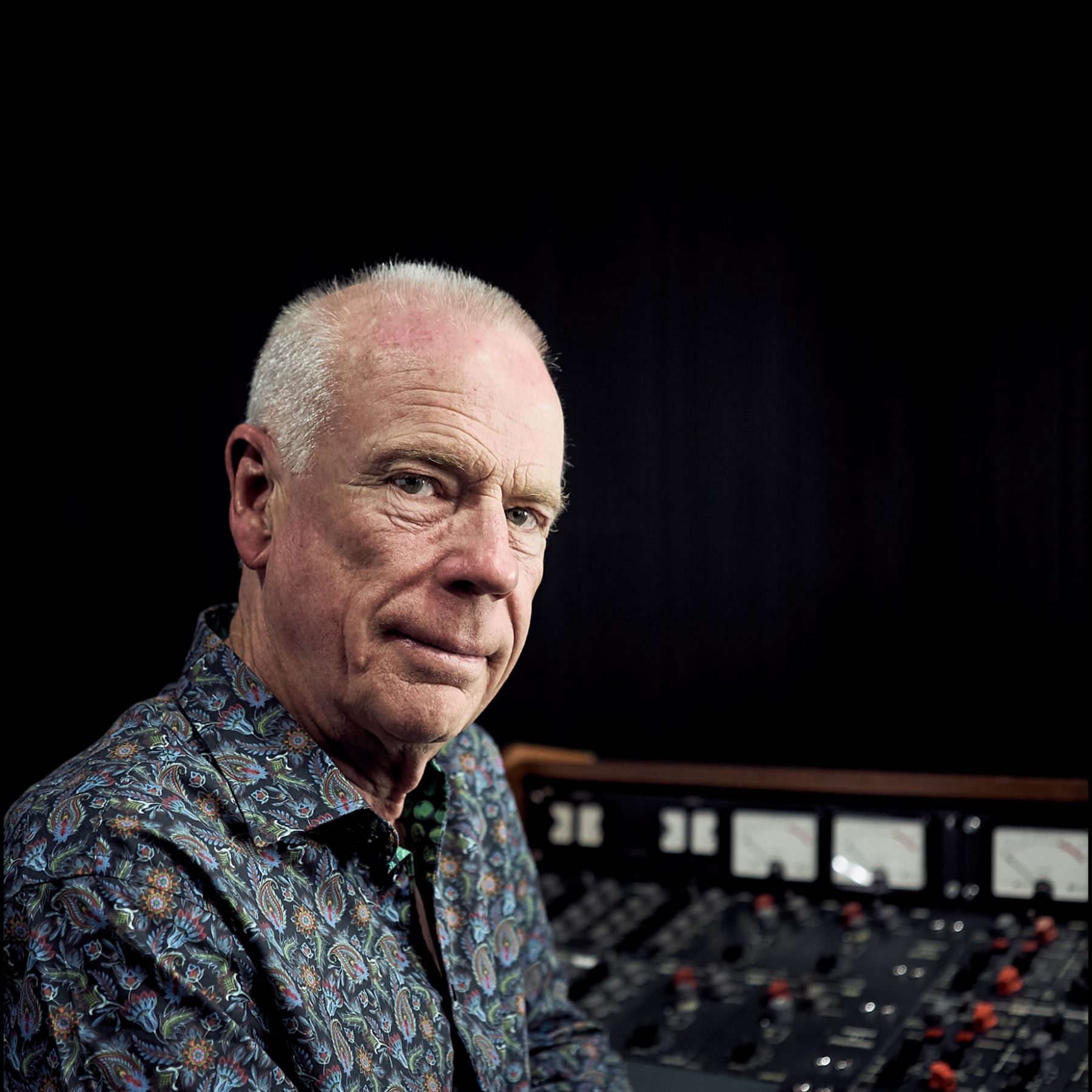
Lifetime Achievement Award: Martin Benge
From Abbey Road, to 301, to Abbey Road, to 301. Producer, engineer, and studio manager Martin Benge has helped shape the world’s biggest studios by reinventing them, time and again.
Our previous Lifetime Achievement Award recipient, Richard Lush, and our latest awardee, Martin Benge, both entered the EMI system roughly a year apart. While Lush went straight into Abbey Road, hiding behind a tower of Fairchilds and trying not to erase John Lennon’s vocal takes, Martin Benge began his journey beavering away at the EMI factory in Hayes. In 1962, 18-year olds like Benge didn’t need recording aspirations to work for EMI; it wasn’t just a music company, it was a vast, vertically integrated electronics conglomerate. “They made everything,” recalled Benge. “Pressed the records, made the record players that played them, and the radios and televisions.” Benge embarked on what he thought would be a promising electronics engineering career with the company. He worked his way through a five-year apprenticeship that began with two weeks filing the same metal block down to a square within a couple of thousands of an inch. “It seems far removed from electronics,” said Benge, “but we had to build things, and we had to get our practical metalwork skills up to an acceptable level.” From there, he learnt soldering and circuitry, then started building projects like an ‘over the horizon’ airborne radar for a defence research project. After two years, he moved into the audio department and started building REDD.51 tube consoles, the exact ones Geoff Emerick and Lush were using to record The Beatles, at the time. EMI had studios in 11 different countries during that era, and all of that equipment came from Hayes, “right down to tape machines, consoles, and some microphones,” said Benge.
In 1965 Benge moved over to the technical department at Abbey Road Studios, where his first two weeks were the studio equivalent of filing a metal block; getting his cable coiling skills up to scratch. “You weren’t allowed to start tinkering around with equipment until you mastered the very basics of the job.”
Unlike todays studios, where, if there is an assistant, they’ll set up the equipment, as well as help operate it. Those two assistant roles were divvied up into the faintly derogatory cohorts of ‘button pushers’ and ‘boffins’. The boffins, like Benge, would pull out the session sheet and go about putting out the mics, wiring them up, patching in all the equipment, checking levels and biasing the tape machines, so when the engineer (and ‘button pushers’ like Lush) arrived they could simply position the mics and be ready to record.
CLASSICAL MIXUP
By now the bug had truly bitten. “I realised recording was what I wanted to do,” said Benge. “I’d always loved music and sound, and tinkered around with old radiograms and record players. I was fascinated with the whole idea of music on a disk.”
Having spent the last year building the gear he was working with, Benge had a leg up when he arrived at Abbey Road’s technical department. Then having spent the next two years setting up sessions at Abbey Road, he thought he’d have a field day when they finally let him loose on the recording side. “My first session was just an artist test, or a demo as we call it nowadays,” he began. “I sat down at the console thinking, ‘I know this equipment backwards. I built it, I’ve repaired it, I’ve fixed it, I’ve debugged it, I’ve set it up. But operating it and trying to get a sound is a whole other ball game. Within an hour I realised I knew absolutely nothing about the recording side! I’d hopelessly underestimated the learning curve I was on to get to a point where I could be useful to an artist or a producer and pull a decent sound.”
Thankfully, some of Abbey Road’s producers were “prepared to give you a go and give you some pointers on how to do the job. They were patient people.” George Martin even asked him to engineer a couple of jobs; “far too early in my career, really,” said Benge. “I just wasn’t really up to it.”
Over the years, Benge managed to carve out a path in big band and classical recording. He benefitted from a changing of the guard at Abbey Road, just as he entered the recording side. Alan Stagg, a very experienced classical balance engineer, had arrived as the studio manager, and his contemporary approach to orchestral recording immediately raised the hackles of the entrenched engineers. Benge had no such concerns, but didn’t feel ready to step up to full orchestral sessions. Stagg didn’t seem to think so, saying his experience recording 40-piece ensembles for The Black and White Minstrel Show for Geoff Love in Studio 2 was enough. “He said it wasn’t a big stretch to do symphonic recording, although you use a different technique.” He was soon helming sessions for the London Symphony Orchestra and New Philharmonia (with conductors Otto Klemperer and Sir John Barbirolli), where there’d be 120 players in the studio. “You’d only use four or five microphones. You tried to record as faithfully as possible to the sound in the room.”

Other times, Benge changed the script completely. Like when he recorded the Beethoven piano sonatas with Daniel Barenboim. The typical approach was to use two mics, moving them in and out to find the best balance of direct and ambient sound. “He was very fussy about the sound and wasn’t getting the results he wanted from some of the other engineers, who were a bit set in their ways,” recalled Benge. “He wanted a closer, more exciting sound. We miked the piano a little bit closer and then had omni-directional mics right up in the back of the studio to capture the ambience and bring them into the mix with more control.”
His first orchestral session was in 1967 with Abbey Road regulars, Sidney Bowman and His Old Tyme Dance Orchestra. They would come in for their yearly drop on Parlophone Records with producer Bob Barratt, who decided to give Benge a go. It was a lot to handle as it was; recording and balancing direct to stereo on a BTR-3 quarter-inch tape machine. “You had to do the mix and the recording in one hit and get it to sound good enough to go straight to the cutting room,” said Benge. What he wasn’t prepared for, and what made it most memorable, were the two ballroom dancers dancing the routines in the studio to ensure the tempos were spot on. “In the middle of a take the dancers would stop, wave their hands and scream out, ‘It’s speeding up or it’s slowing down.’ Then you had to go and do it again.”
It didn’t all go smoothly though. Another early session was with the Barry Lee Show, and David Paramor, the son of famous producer Norrie, was producing. “This was a bit of a rock ’n’ roll gig,” prefaced Benge. “David really wanted a punchy snare sound, which he’d never been able to get from Abbey Road. I thought, ‘All right, here’s my chance to come up with goods and impress him.’ So I miked the snare pretty close and spent a bit of time trying to get it to sound good. It was in the early days of the TG console, which had only just arrived at Abbey Road to replace the old REDD.51 valve desks. Unfortunately the TG console didn’t have a lot of headroom and when we finally came to mix it, we pulled up the rhythm track on the four-track and had a listen… and the snare drum was all distorted. I’d gotten carried away with the levels, but we hadn’t noticed it during the recording because we had it cranked up so loud. That was the last job I did for David unfortunately, but you learn by your mistakes, and it never happened again.”
Benge got another chance to prove himself though, on a Beatles session, no less. “Where we beginners used to get a chance would be as a second choice because the artist’s regular engineer might not have been available,” explained Benge. “If you did a good job, you might even dislodge the guy that had been with the artist for some years.”
That was how he got to do his first Beatles session. Ken Scott had been doing the White album, but he couldn’t make it one Sunday and Benge’s name got thrown into the ring. The session ended up being Across the Universe. “Paul was always good to work with. George was great. Ringo just came in to do his thing. And John, well you never really knew where you stood with him. He was difficult to work for sometimes, but he was a brilliant songwriter, had a great voice and he was always looking for something different, as they all were really. That song, is an absolute classic and haunting. It was just so good from the minute you heard it.”
That was how he got to do his first Beatles session, which ended up being Across the Universe
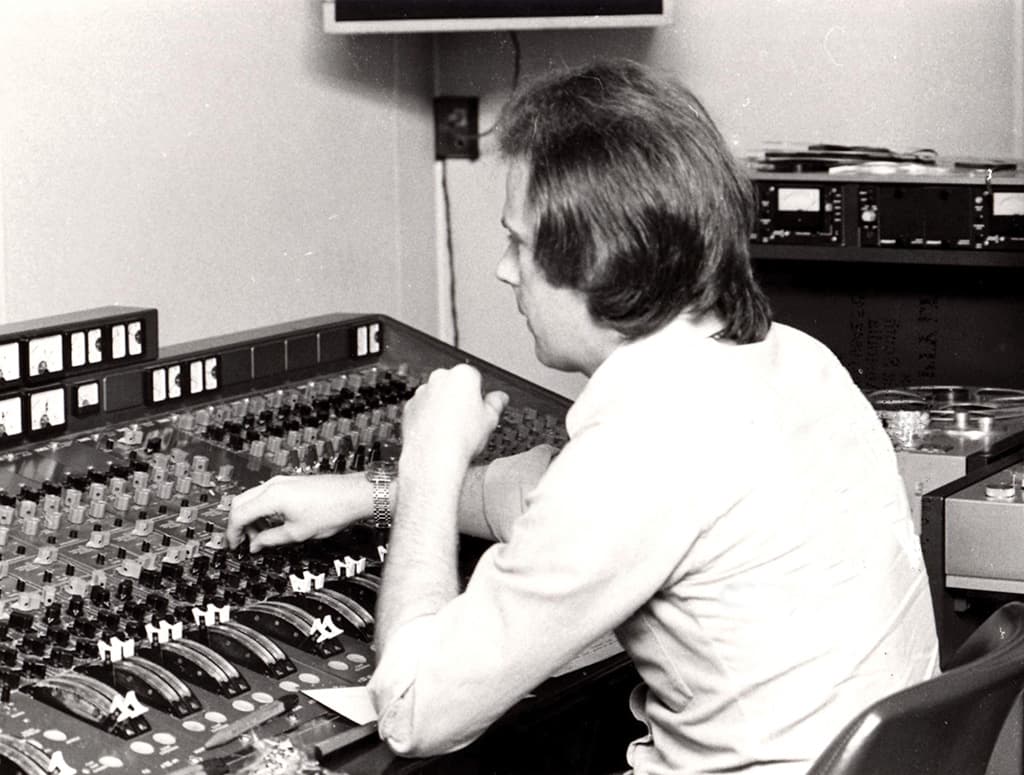
ROVING TO AUSTRALIA
In 1968, with two weeks notice and a bit of disc cutting training, 24-year old Benge was shipped off to Johannesburg for a three-month stint as the studio manager. EMI needed a stop gap after the previous manager had left the one-man show. He recorded both artists that were white, and artists from the Bantu black music scene. However, because of Apartheid, they never mixed. “Even though the black musicians were generally better, they couldn’t even appear on the same record,” recalled Benge. “They were given very little studio time, one take and out the door.”
After eight years at Abbey Road, Benge and his wife-to-be Jeannie wanted to do some travelling. So in 1969-’70, Benge left Abbey Road, and he, Jeannie and a few friends trekked overland all the way to Kathmandu where their Land Rover died.
When they returned, he planned to go back to Abbey Road, but his sister, Rosemary, was moving to Australia. Well and truly bitten by the travel bug, after he and Jeannie got married, they thought they’d try out Australia, too. At first, it was pitched as a working holiday. “We took off for Australia in 1971 without any job arrangements. I walked into EMI Studios on Castlereagh Street, and they gave me a job straight away on the strength of having been an Abbey Road engineer. I loved working there; I loved the artists, the studio, the people there, and the lifestyle in Australia. We stayed for 22 years, until I ended up back at Abbey Road.”
The Australian operation was a simplified structure compared to Abbey Road. There were 12 to 14 ‘boffins’ in the UK studio’s technical department, some who were solely tape machine specialists and others who were locked away in R&D. By comparison, there were three technicians when Benge arrived at the Australian studio. Benge was fine with the new ‘one-man band’ model, having trained in both departments. Lush came over shortly after, followed by Glen Phimister in ’76, making it majority Londoners on the recording team at the time.
After a while, Benge tired of the commercial work. He had artists wanting to record music, but was constantly tied up doing “stupid commercials for cornflakes, cigarettes and Harvey Norman bedding. It wasn’t what I wanted to do, I just wanted to do music.”
So very early on in the days of freelance engineering, Benge bit the bullet and had an 11-year run that was heavy on music and film scoring, and lower on the jingles. “I did a lot of my best work during that period,” reckoned Benge. “I did quite a lot of jazz like Crossfire, orchestral and classical work.” He appreciated the lack of egos, and laborious takes of popular music. Preferring to walk out of the studio with a finished song.
STUDIO MANAGEMENT 301
By 1984, 301’s manager was returning to the US, and they asked if Benge would be interested in making that transition from engineer to manager. He was interested, but only if he could maintain his recording career. Having grown up in the Abbey Road system where you barely saw the studio manager, Benge “could see a lot of things about the studio that could be improved and changed FOR THE better if the person running it was an engineer. You immediately know how the studio’s performing if you’re actually using it yourself.”
He’d also learnt a lot about how to deal with artist’s needs, and how not to. Back at Abbey Road, Pink Floyd had been recording in Studio Three. The curfew was a strict 10 o’clock, but they were just getting going and wanted to carry on. After a bit of an argument, the security guard whose job it was to close up shop, rang the studio manager Alan Stagg, unsure about what to do. “Alan came in, pretty furious about having been dragged out of bed,” recalled Benge. “Being the very undiplomatic kind of guy he was, he walked into the control room and flipped the breaker, turning the power off right in the middle of recording a take. They were mortified.” The next day, Roger Waters was in McCartney’s ear about it, who also had frustrations about the time restrictions. “By that stage The Beatles were selling a bucketload of records for EMI. So McCartney rang the chairman and from that moment on everything changed. There was much more flexibility about session times, and the studio started to be used much more as a workshop experimentation place.”
The first thing he did at 301 was to change the acoustics in Studio A. “It was lifeless. It had lots of absorption, carpets on the floor. There was no live area where you’d get anything back from the room.” They gutted it and built a new live room with tiled flooring, which could be used as an isolation room and saved them from having to record vocals in the airlock between the studios. That was a hit, so they got started on Studio B’s acoustics. Following that, he brought in the studio’s first SSL desk, and ripped out the NECAM system on the Neve 8078 and put in George Massenberg’s Flying Faders system. “It was a big improvement, and we got a lot more mixing work through the room.”
The rest of it was a bit more boring, but crucial to the studio running as a proper business. Benge developed computer software to run the business; including the booking system, administration of engineers’ hours, and tape sales. “The place became much easier to run because we were getting the information you needed on a business level.”
All those changes immediately returned a bump in international clientele. Acts that would have typically gone to Rhinoceros or Paradise Studios because of the vibe, were starting to show up; David Bowie, Duran Duran, Elton John, Prince, Bob Dylan and Split Enz. Located on the top of the EMI building, there were always a lot of suits around. “It still reeked of this corporate EMI culture and I really wanted to get rid of that from the studio.” So with all the new changes came a shift in vibe. “We managed to get the suits out of the studio and hidden away safely.”

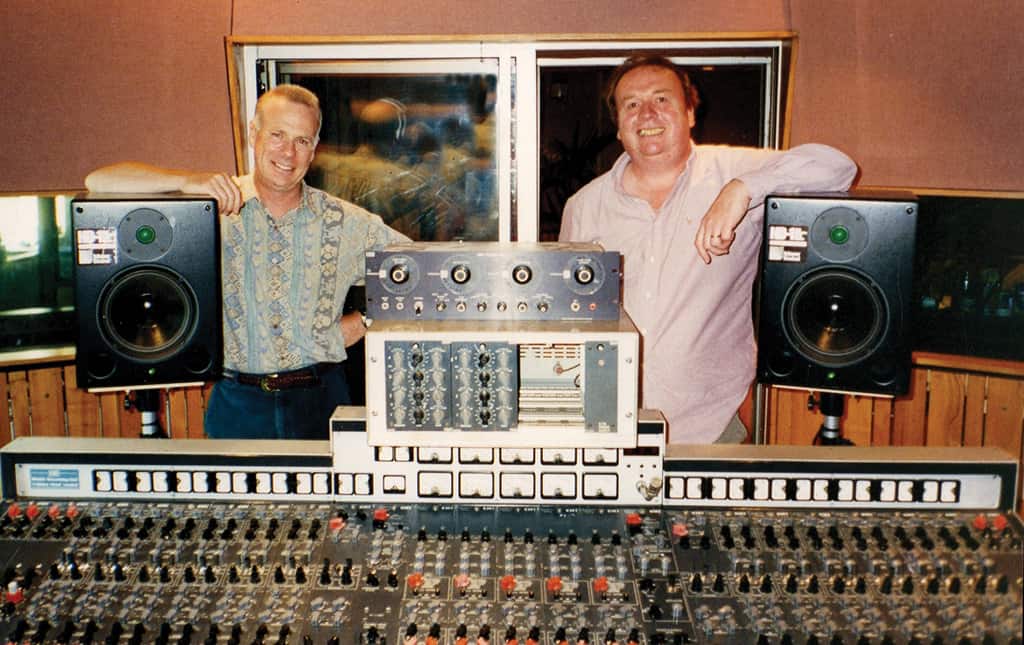
Richard Branson started his airline on the basis of that money. You can look at it this way; EMI set up Virgin Atlantic
VIRGIN TERRITORY
At the bi-annual global EMI studios conference, Benge would fly the flag for Australia. “I realised the benefits to 301. Having a really high profile within EMI would help us succeed in getting the investment we needed to keep studios up to date.” Apparently he’d done too good a job of it, because he was soon poached.
In 1992, which had by then become Thorn EMI after EMI merged with another big electronics group. The company was flush with cash and eyeing off the roster of artists on Richard Branson’s Virgin Records label — The Rolling Stones, Phil Collins, The Spice Girls. They ended up shelling out £580m for the group. “Richard started his airline on the basis of that money. So you can look at it this way; EMI set up Virgin Atlantic.”
With the combined catalogues, EMI suddenly became the biggest music label in the world. Tacked onto the end of that sale in ’92, happened to be a handful of world class studios. They were really an afterthought in the whole affair, but included The Manor (where Tubular Bells was made), Olympic Studios (which was used by The Rolling Stones, Jimi Hendrix and Led Zeppelin), The Townhouse in Shepherd’s Bush (where that famous Phil Collins drum sound was discovered), and another smaller studio, Townhouse III, that was originally The Who’s Ramport Studios, in East London. There was also a truck called Manor Mobile which “used to go all over the world, like to record at the pyramids in Egypt.” All of a sudden, alongside Abbey Road, EMI now had “14 different major recording studios, with big consoles, multitrack machines, hundreds of staff and mobile trucks.”
At the time Ken Townsend was managing Abbey Road, and his counterpart at the Virgin group had been Barbara Jeffries. At the top of the food chain, the decision was made that only one person was needed to run the group. Townsend was looking to retire, and Jeffries wanted the job, but Townsend didn’t want someone from Virgin coming in to run Abbey Road because of the cultural differences. It became important that the EMI culture persist in the merger, not the other way around.
They tapped Benge, who’s previous experience as an Abbey Road employee, EMI studio manager, and freelance engineer, made him a good fit. Perhaps if Jeffries had been installed, we’d still have one or more of Olympic, The Townhouse and The Manor, but not Abbey Road.
Benge took the role and moved back to the UK in ’93, and walked into a massive job. “I think Branson had an inkling that he was going to unload the business, so the Virgin operation had stopped investing in its studios years before,” explained Benge. “Most of the equipment on the Virgin side was getting pretty old and the rooms were getting a little bit run down.” He had to make a call on which studios to invest in, and which to let go. Unfortunately, The Manor was the first casualty. The heritage-listed house needed a new roof and OTHER REPAIRS, which wERE going to cost a quarter of a million pounds; the heating system had busted; and the console was a well-used E Series SSL that was past its used by date. It was put out to pasture to become a country house for a well-to-do new owner.
They also got rid of Townhouse III, “mainly because it was in this no-go housing estate area,” explained Benge. “Every night there was some sort of break in or artists were accosted in the street going to the studio. A security guard getting beaten up was the final straw. They’ve all gone now. EMI is now owned by Universal Music and the only surviving studio of that lot is Abbey Road.”
It wasn’t all doom and gloom. Benge oversaw a complete cosmetic upgrade at Olympic. “It had a huge back garden,” said Benge. “We put in an enormous tennis court and a conservatory to make it into a really comfortable place to work. Eric Clapton loved it there because he could play tennis between sessions. The conservatory was really good for bands to entertain friends, and we had a nice restaurant there.”
They also purpose-built a purple mix studio for Mark ‘Spike’ Stent. It was designed by Sam Toyoshima, who’d previously overhauled the acoustics of Olympic and who Benge went on to consult with on a number of worldwide studio builds.



ACTIVELY INTERACTIVE
At the Townhouse, they put in two new SSL consoles and and built two new mastering rooms, but the biggest shift was the conversion of a chunk of the building into an interactive division. A similar change took place at Abbey Road, where they took over the building next door and began to build websites for bands, and put videos of sessions onto DVDs for the bands. It was a deal they’d made with Apple. Eager to get into the music space, in return for using Abbey Road branding Apple supplied all the computers and expertise.
Benge saw EMI as perfectly placed to take on the next round of innovation in the music industry. It had all the ingredients; two full interactive divisions, a relationship with the most innovative computer company in the world, a long history of new product development and manufacturing… and the biggest pool of music talent in the world.
Despite that, the company completely failed to make a dent on the future of music technology. “During the ’90s, the powers that be could not see the threat or opportunity of the Internet,” lamented Benge. “They clung to CDs and the tried and tested method of stamping out product and shipping it, rather than having a more futuristic view of the industry. Digital distribution was coming, and the digitisation of all their assets was threatened by piracy.
“Nobody in the upper echelons of the company was really focused on where we were going to be in five years. They were only focused on where we were going to be at the end of the month so they could get their bonuses. That’s the saddest thing about the demise of EMI. Nobody really wanted to do what Steve Jobs did when Apple invented iTunes and the iPod. EMI should have done that, or one of the big music companies should have.
“In the end it had to be a computer company which came up with the new business model. The rest is history. EMI, as a company, doesn’t even exist anymore.”
BACK TO SQUARE 301
After four and a half years, Benge had a coffee in the Abbey Road bar with SAE founder Tom Misner. They’d met in the ’80s, but hadn’t had any contact for years. Misner was interested in touring the facilities and divulged he was planning on building his own studio in Australia, one with a big orchestral room. Benge had already decided to move back to Australia, without any firm prospects other than returning to freelance engineering, and agreed to help out. The building was going to be in Alexandria, in direct competition with 301, which at that time was under private ownership and struggling. Initial buyout discussions hadn’t gone anywhere, and Benge though it would be a good idea for Misner to take it on. “I said, ‘It could make a lot of sense for you to buy 301 because you’re going to have a great brand, have a team of staff to run things and you’re going to get all this equipment. It could be a really good deal if you get the business at the right price.’” Naturally, the right price for Misner was “ridiculously low,” said Benge. Eventually, after months of negotiation, the deal was done. Misner tabled his name ‘Mirage Studios’ and took on the 301 moniker for his new Mitchell Street premises.
“301 went on to live another day which was great,” said Benge. “The rest is history, and it’s got that blood line going all the way back to 1926 when recording started in Australia. That heritage is important, it’s a stamp of quality. Look at it now. It’s better than ever.”
Over the years, Benge has seen a lot of studios come and go, some under his own knife, but he’s still bullish about 301. Despite the days of the professional studio as the only way to record being over, and “a lot of projects being far more suited to doing stuff on a laptop or a phone than going into a big studio,” said Benge. “If you want orchestras or bigger groups then you should go to the studio to do it. If you want it to be the best it can be, there’s no substitute for it.
“The strong survive, and 301 will live on because it’s the only one of its kind. There are only so many projects that can afford to hire a facility like that. I think it’s going to become more of a hub of excellence and collaboration. The big studio side of it would just be a part of that. The rest of it will be nurturing talent, supporting and helping to develop the artistic community.”





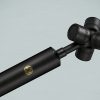


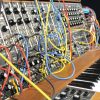
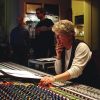








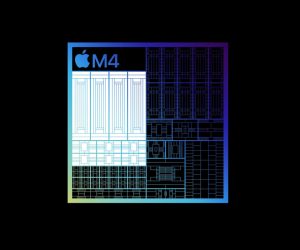


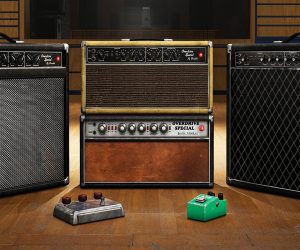




RESPONSES